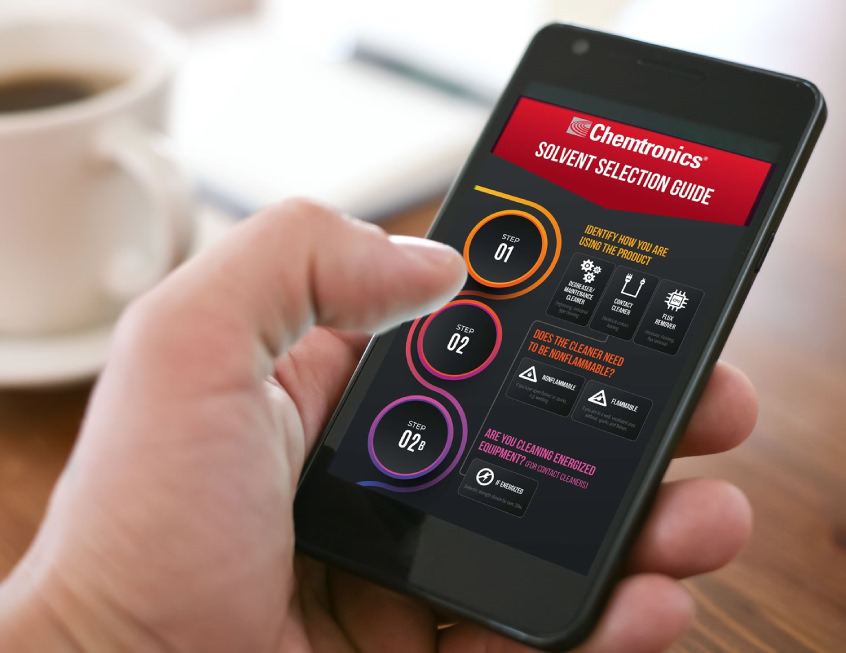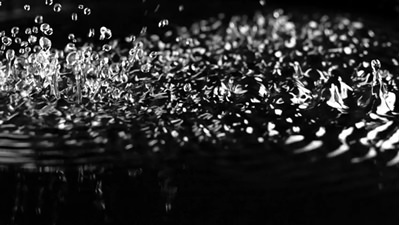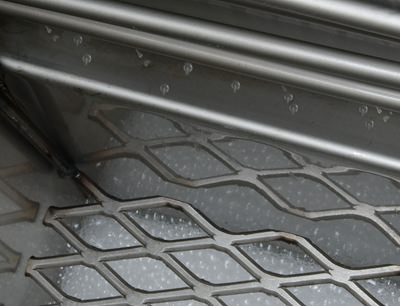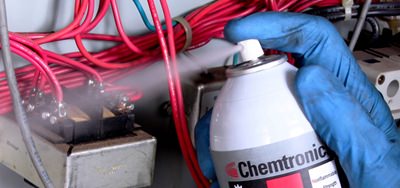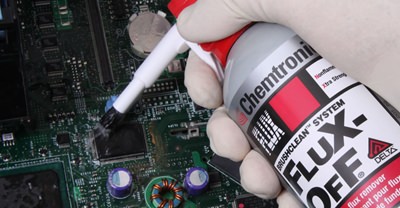Click step below for more information...
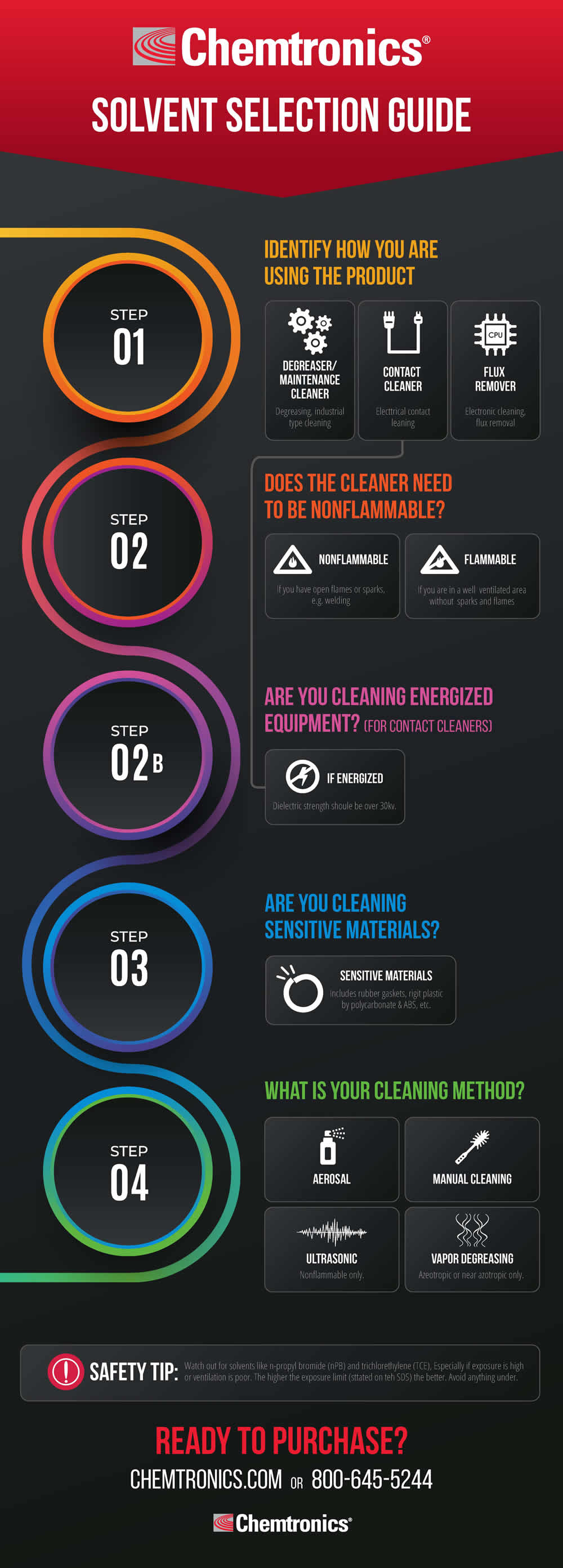
Are you in search of the perfect degreaser, contact cleaner, or flux remover for your specific application? Look no further! This comprehensive guide aims to assist you in selecting the best cleaning solution to meet your needs. Whether you are dealing with stubborn grease, electric contacts, or flux residues, we understand the importance of finding the right product to ensure optimal performance and cleanliness.
By exploring key factors such as formulation, compatibility, safety, and efficiency, this guide will equip you with the knowledge necessary to make an informed decision and achieve exceptional cleaning results.
Step 1: Identify How You Are Using the Product
When selecting the best cleaner for your application, it is important to first identify how you intend to use the product. The formulation and packaging is often engineered for a particular use in mind.
Degreasers
Degreasers are designed to remove grease, oil, dirt, and other contaminants from surfaces. They are commonly used in industrial, automotive, and aerospace applications. Degreasers come in various forms, including solvent-based and water-based. Solvent-based degreasers are effective at removing heavy grease and oil but may be harsher on certain materials. Water-based degreasers are less aggressive, are still effective for general cleaning, but can take a long time to dry.
For more information, check out “Ultimate Guide to Degreasers & Precision Cleaners”.
Contact Cleaners
Contact cleaners are specifically formulated to clean electrical contacts, connectors, switches, and other electronic components. During operation, contaminants such as dust, dirt, oil, grease, or moisture can accumulate on the contacts, leading to poor electrical conductivity, increased resistance, and potential voltage or current leakage. If left unaddressed, these issues can result in device failure, overheating, arcing, or even electrical fires.
Contact cleaners are designed to remove oxidation, dirt, and other contaminants that can interfere with electrical conductivity. Contact cleaners are available in aerosol spray form, which allows for precise application. They often contain fast-drying solvents that evaporate quickly without leaving residue. Contact cleaners are commonly used in electronics manufacturing, maintenance, and repair.
For more information, check out “Ultimate Guide to Contact Cleaners”.
Flux Removers
Flux removers are used to clean flux residues after soldering, electronic assembly, or PCB repair processes. Flux is a material applied to facilitate soldering and prevent oxidation, but it can leave behind residues that may affect the performance and longevity of electronic components. Flux removers effectively dissolve and remove these residues. They are available in aerosol or liquid forms and may contain solvents or cleaning agents specifically tailored for flux removal. It is important to select a flux remover that is compatible with the type of flux used in your application (e.g. rosin, no-clean, or aqueous).
For more information, check out “Ultimate Guide to Cleaning Electronics: Improve PCB Reliability Safely & Effectively”.
Step 2: Does The Cleaner Need to be Nonflammable?
When selecting a degreaser, contact cleaner, or flux remover for your application, one important consideration is whether you can safely use a flammable cleaning product or if you need to choose a nonflammable option. While it is tempting to only consider nonflammable products, that includes a steep cost premium for a problem that could be solved in other ways.
Here are the steps to help you make that decision:
Understand the Safety Requirements
Begin by familiarizing yourself with the safety requirements of your specific application. Consult the manufacturer's instructions, safety data sheets (SDS), and any relevant regulations or guidelines. Look for information regarding flammability and potential hazards associated with the product.
Assess the Environment
Evaluate the environment in which the cleaning product will be used. If you are working in an enclosed space with limited ventilation or where flammable substances are present, using a flammable cleaning product may pose additional risks. Consider factors such as the presence of open flames, sparks, hot surfaces, electrical equipment, or potential ignition sources.
Availability of Storage
Proper storage cabinets or fire-rated areas are of paramount importance when using flammable cleaning solvents. These substances possess a high risk of combustion and can pose serious hazards to both human safety and property if not stored correctly. The use of specially designed storage cabinets or fire-rated areas ensures the safe containment of flammable solvents, reducing the likelihood of accidental ignition or the spread of fires.
These storage solutions are equipped with features such as ventilation systems, grounding mechanisms, and sturdy construction materials that are designed to minimize the risks associated with flammable materials. By implementing these safety measures, individuals can significantly reduce the potential for accidents, protect themselves and others from harm, and mitigate the potential for devastating fire incidents.
Determine the Level of Flammability
Cleaning products vary in their flammability levels, which are usually indicated on the product label or SDS. Some products may be highly flammable, while others may have low flammability or be nonflammable. Pay attention to the flash point, which is the lowest temperature at which a substance can ignite. The higher the flash point the better. A flash point over 140°F (60°C) is often labeled “High Flash Point”.
Consider Alternatives
If you determine that using a flammable cleaning product poses too great a risk for your specific application, explore nonflammable alternatives. Many nonflammable degreasers, contact cleaners, and flux removers are available on the market. Look for products that are explicitly labeled as nonflammable or have a high flash point.
Seek professional advice if needed: If you are unsure about the safety implications of using a flammable or nonflammable cleaning product for your specific application, consider consulting with safety experts or professionals in the field. They can provide valuable insights and guidance based on their expertise and experience.
Step 2b: If Cleaning Contacts, Are You Cleaning Energized Equipment?
When choosing a contact cleaner, one important factor to consider is its high dielectric strength. Dielectric strength refers to the ability of a material to withstand electrical stress without breaking down or conducting electricity. In the context of contact cleaning, it is crucial to consider if you plan to clean energized equipment, especially in industrial or electronic applications because electrical contacts often carry high voltages or currents.
A contact cleaner with high dielectric strength acts as an insulating barrier between the cleaning agent and the electrical contacts. It allows the cleaner to effectively dissolve or displace the contaminants without compromising the electrical integrity of the system. By safely removing the buildup, the cleaner restores the contacts to their optimal condition, ensuring reliable and efficient electrical performance.
Step 3: Are You Cleaning Sensitive Materials?
Some solvents can be harsh and aggressive, causing damage or discoloration to certain materials. It is important to note that the exact behavior of materials when exposed to aggressive solvents may vary depending on factors such as solvent concentration, exposure time, temperature, and the specific formulation of the material. If you are unsure whether you are working on sensitive material, here are some things to consider:
Material Composition
Different materials have varying levels of sensitivity to solvents. For example, plastics, rubber, certain types of coatings, and delicate electronic components can be vulnerable to certain solvents. Determine the composition of the materials you are working with and assess their compatibility with different solvents.
Polycarbonate is a durable and transparent thermoplastic commonly used in items such as safety glasses, electronic components, and medical devices. Aggressive solvents, especially those containing strong organic compounds or chlorinated solvents, can cause swelling, crazing (fine cracks), or even dissolution of polycarbonate. These solvents can degrade the polymer chains, leading to a loss of mechanical strength and optical clarity.
Plexiglass is a common tradename for a transparent acrylic plastic widely used in applications like windows, signage, and display cases. Aggressive solvents, such as acetone, methyl ethyl ketone (MEK), or toluene, can cause damage to plexiglass. These solvents tend to dissolve or soften the surface of acrylic, leading to visible crazing, hazing, or even complete failure, compromising its transparency and structural integrity.
Rubber gaskets are commonly used for sealing applications, such as in plumbing, automotive, and industrial equipment. Aggressive solvents, particularly those with strong solvency properties or high volatility, can cause rubber gaskets to swell, soften, or deteriorate. Solvents like aromatic hydrocarbons, ketones, and certain chlorinated compounds can degrade the rubber, resulting in loss of elasticity, cracking, or complete failure of the gasket's sealing properties.
Manufacturer's Recommendations
Check the manufacturer's guidelines or recommendations for the materials you are cleaning. They may provide specific instructions or precautions regarding solvent use. Manufacturers often recommend solvents that are compatible with their materials and can help you avoid any potential damage.
Test On a Small Area
If you are unsure about the compatibility of a solvent with a specific material, it is always a good idea to perform a test on a small, inconspicuous area. Apply the solvent to a small portion of the material and observe any adverse reactions such as discoloration, swelling, or degradation. If the material shows any signs of damage, choose a different solvent or seek alternative cleaning methods.
Step 4: What Is Your Cleaning Method?
When selecting the best degreaser, contact cleaner, or flux remover for your application, it's important to consider the type of cleaning method you will use.
Consider the following factors when deciding on the cleaning method:
- The size and complexity of the parts or surfaces you need to clean
- The type and level of contaminants you need to remove
- The accessibility of the areas to be cleaned
- Environmental and safety considerations, such as the toxicity of the cleaning agents or waste disposal requirements
- The equipment and resources available to you
Here are some common cleaning methods to choose from:
Aerosol
Aerosol cleaners come in spray cans and are convenient for small-scale or localized cleaning. They provide a targeted stream of cleaning solution, making it easier to reach intricate or hard-to-access areas. Aerosol cleaners are suitable for quick cleaning tasks or spot cleaning and require minimal equipment.
Manual Cleaning
Manual cleaning involves using cleaning agents, such as degreasers or flux removers, along with brushes, wipes, or other cleaning tools to manually remove contaminants. This method provides more control over the cleaning process and is suitable for larger surfaces or parts that cannot be immersed in liquid. Manual cleaning is often used in maintenance and repair tasks.
Ultrasonic Cleaning
Ultrasonic cleaning utilizes high-frequency sound waves to create microscopic bubbles in a cleaning solution. These bubbles implode near the surface being cleaned, generating tiny, high-velocity jets that dislodge contaminants. This method is effective for cleaning complex or delicate parts, as the cleaning action can reach crevices and hard-to-reach areas. This method is excellent for intricate parts, small crevices, and areas that are hard to reach manually. Ultrasonic cleaning is commonly used in electronics, jewelry, and precision manufacturing.
For more information, check out “Ultimate Guide to Ultrasonic Cleaning”.
Vapor Degreasing
Vapor degreasing involves using a heated solvent that vaporizes to clean the surface. The part to be cleaned is usually suspended above the solvent, allowing the vapors to condense and dissolve contaminants. Vapor degreasing is highly effective at removing oils, greases, and other stubborn contaminants. It is commonly used in industrial, aerospace, and medical device assembly and maintenance applications where precision cleaning is required.
For more information, check out “Webinar: Experts' Guide to Vapor Degreasing”.
Safety Tip: How Good Is Your Ventilation?
When selecting a cleaner, it is essential to prioritize your health and safety. Toxic solvents like n-propyl bromide (nPB), trichloroethylene (TCE), and perchloroethylene (perc) can pose serious risks if not used in a properly ventilated area or without the appropriate personal protective equipment (PPE).
These solvents are being closely evaluated by the EPA (Environmental Protection Agency) and OSHA (Occupational Safety and Health Administration) because of potential negative health effects from exposure like cancer, reproductive effects, reduced cognitive ability, and organ failure.
Here are a few points to consider:
Read the label or SDS - Always check the labels or safety data sheets (SDS) and avoid products that contain nPB, TCE, or perc. Look for cleaners that clearly state they are free from these toxic solvents. One trick is to look for the chronic toxicity symbol, which looks like the nasty scene from the movie Alien.
Prioritize ventilation - If you must use cleaners that contain potentially harmful solvents, ensure you are in a well-ventilated area. Open windows or use fans to circulate fresh air during and after cleaning.
Wear appropriate PPE - If handling cleaning products with toxic solvents is necessary, use personal protective equipment such as gloves, goggles, and a mask to protect yourself from inhaling or coming into direct contact with harmful substances.
For more information, check out “4 Toxic Chemicals Hiding in Your Company's Contact Cleaners and Degreasers”.
Selecting the best degreaser, contact cleaner, or flux remover for your application is a crucial step in achieving optimal cleaning and maintenance results. By considering key factors such as the type of contaminants, the surface material, the cleaning method, and safety considerations, you can make an informed decision that ensures effective cleaning while protecting your equipment and personnel.
Remember to carefully read product labels, consult manufacturer recommendations, and, if necessary, seek professional advice. With the right degreaser, contact cleaner, or flux remover in your arsenal, you can confidently tackle even the most challenging cleaning tasks, prolonging the lifespan of your equipment and maximizing its performance.
So, equip yourself with the knowledge and choose wisely to achieve cleanliness and efficiency in your specific application. For more information or technical support, contact Chemtronics at askchemtronics@chemtronics.com or 678-928-5845.
Ask A Technical Question
Stay up-to-date on Chemtronics news, products, videos & more.

